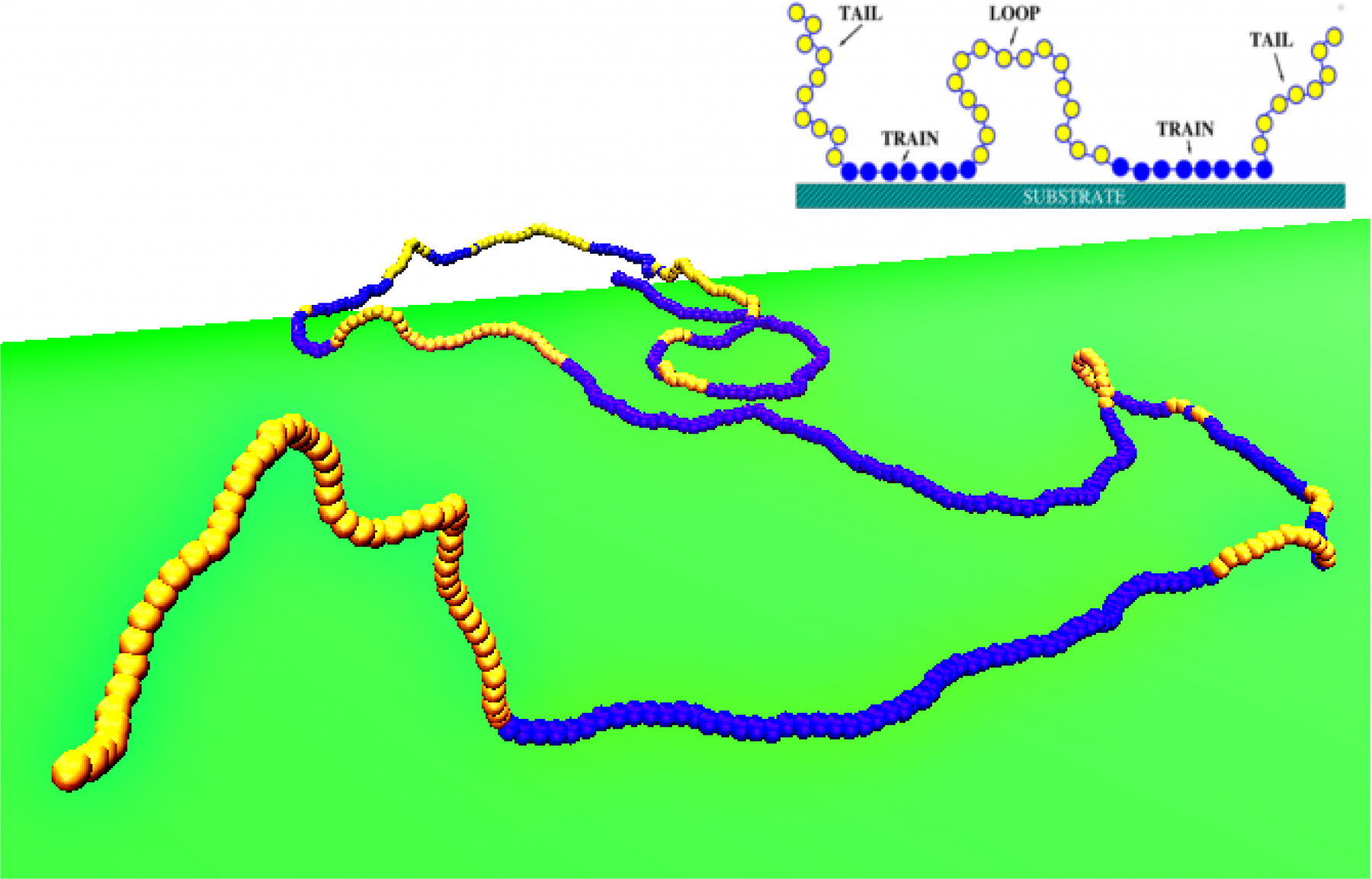The adsorption transition and the structure of semiflexible adsorbed macromolecules are studied by a molecular dynamics simulation of a coarse-grained, bead-spring type model. Varying chain length N and stiffness κ (which is proportional to the persistence length ℓp in d = 3 dimensions) as well as the strength ϵwall of the adsorption potential, the adsorbed monomer fraction, orientational bond order parameter, and chain linear dimensions are studied. In the simulations, excluded volume interactions normally are included but can be “switched off,” and thus, the influence of excluded volume (leading to deviations from predictions of the wormlike chain model) can be identified. It is shown that the variation in the adsorption threshold ϵcrwall with ℓp is compatible with the predicted law ϵcrwall∝ℓp−1/3. In the vicinity of the adsorption threshold, the coils are still three-dimensional, and for large ℓp, the effect of the excluded volume is almost negligible, while for strongly adsorbed chains it is always felt. Near the transition, the decay length of orientational correlations along the chain contour increases gradually from ℓp to 2ℓp. While the latter value is expected for strictly two-dimensional chains from the Kratky–Porod model, this model is inaccurate for the description of lateral chain dimensions of long, strongly adsorbed, semiflexible polymers due to its neglect of excluded volume. The significance of these findings for the interpretation of pertinent experiments is briefly discussed.
Download “Article preprint” JCP_152_semiflex_ads.pdf – Downloaded 333 times – 854 KB
Download a copy of the manuscript (preprint version)

